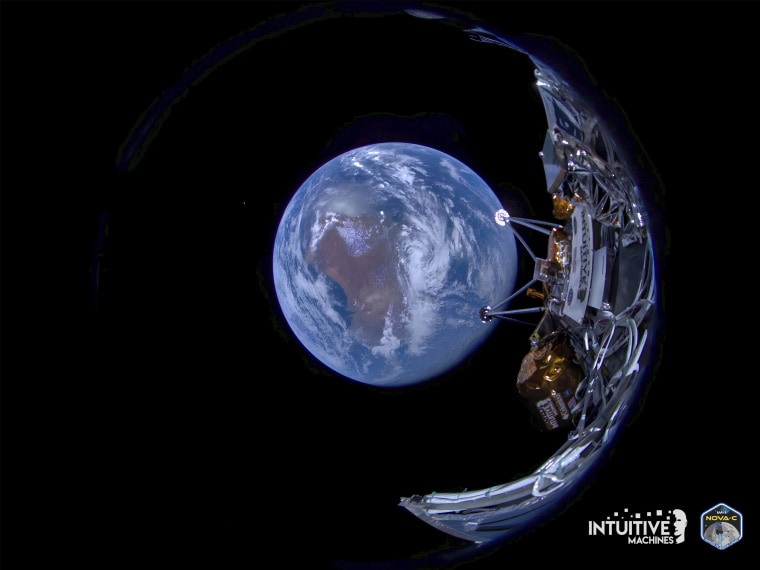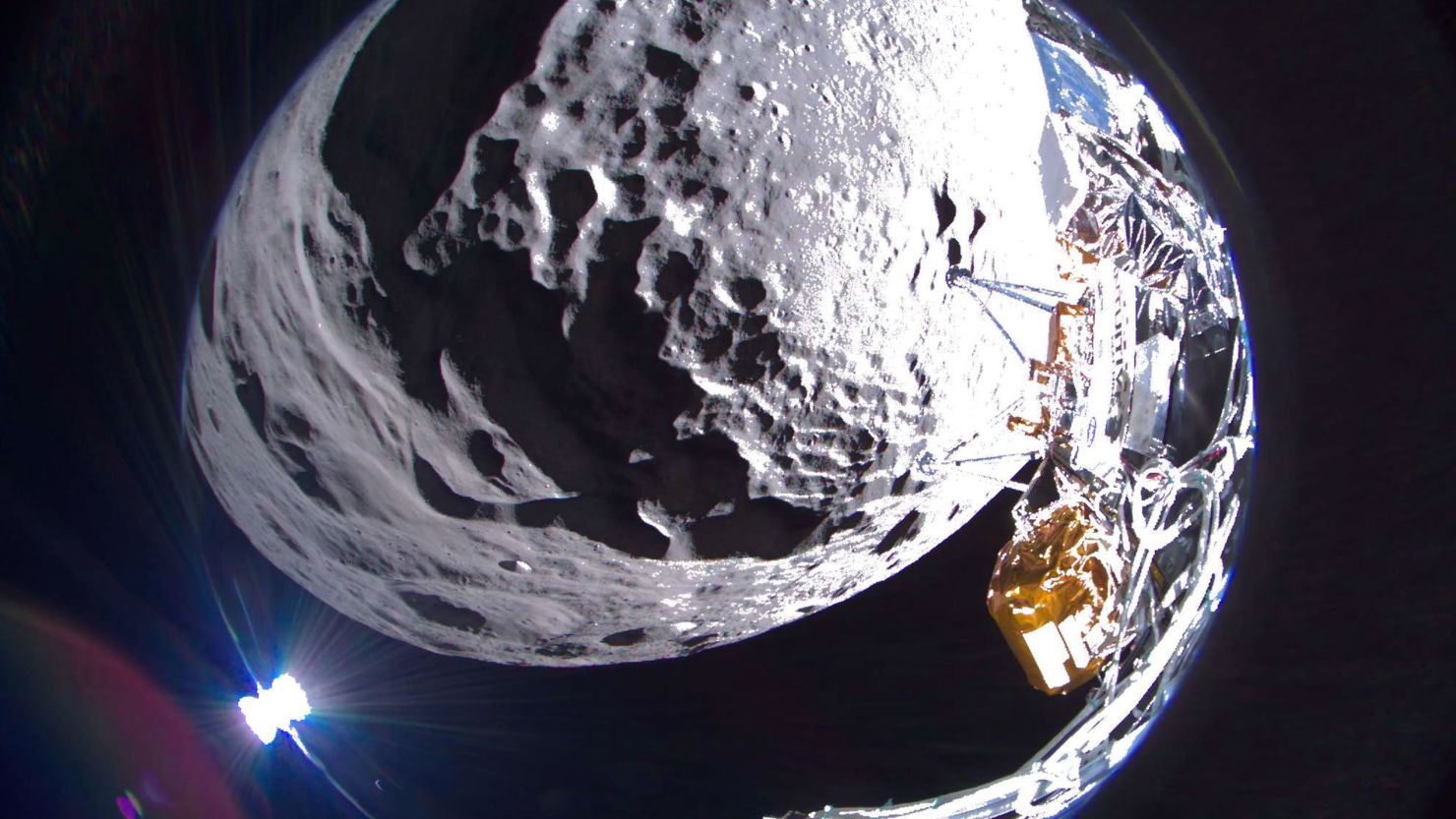Tech
Sideways Moon Landing Cuts Mission Short, Private US Lunar Lander Will Stop Working Tuesday

CAPE CANAVERAL, Florida – A private US lunar lander’s mission was cut short after landing sideways near the moon’s south pole. It is likely to stop operational on Tuesday.
Intuitive Machines, the Houston-based firm that developed and flew the spacecraft, announced Monday that it will continue to collect data until the solar panels no longer receive sunlight. Officials estimate this to happen early Tuesday, based on the Earth’s and moon’s positions. That falls two to three days short of the week that NASA and other clients had anticipated.
The lander, dubbed Odysseus, is the first U.S. spacecraft to land on the moon in over 50 years, carrying experiments for NASA, the primary sponsor. However, it arrived too quickly last Thursday, and the foot of one of its six legs caught on the surface, forcing it to tip over, according to company authorities.
According to photographs taken by NASA’s lunar reconnaissance orbiter, Odysseus landed within a mile (1.5 kilometres) of its planned target at the Malapert A crater, roughly 185 miles (300 kilometres) from the moon’s south pole.
The LRO shots from 56 miles (90 km) above show the lander on the surface, but it is hardly visible in the blurry images. Embry-Riddle Aeronautical University’s camera-ejecting experiment, which was supposed to record photographs of the lander as they both dropped, was called off shortly before touchdown due to a last-minute navigation difficulty.
Sideways Moon Landing Cuts Mission Short, Private US Lunar Lander Will Stop Working Tuesday
According to NASA, the lander landed in a small, deteriorated crater with a 12-degree slope. That is the closest a spacecraft has ever gotten near the south pole, which is important due to probably frozen water in the permanently shadowed craters.
NASA, which intends to land astronauts in this region in the coming years, paid Intuitive Machines $118 million to bring six experiments to the surface. Other customers had things on board.
Sideways Moon Landing Cuts Mission Short, Private US Lunar Lander Will Stop Working Tuesday
Instead of landing upright, the 14-foot (4.3-meter) Odysseus landed on its side, limiting its connection with Earth. The overturned lander covered up some antennas, and those that remained exposed ended up near the ground, resulting in intermittent communications. The solar panels were much closer to the surface than expected, which was less than optimal given the mountainous terrain. Even in the best circumstances, Odysseus only had a week to function on the surface before the long lunar night began.
Since the 1960s, only the United States, Russia, China, India, and Japan have successfully landed on the moon, with the United States being the only one with crews. Japan’s lander also ended up on the wrong side last month.
Despite its tilted landing, Intuitive Machines was the first private company to join the privileged group. Another American company, Astrobotic Technology, attempted it last month but could not reach the moon due to a fuel leak.
Sideways Moon Landing Cuts Mission Short, Private US Lunar Lander Will Stop Working Tuesday
Intuitive Machines almost failed as well. Ground teams only activated the lander’s navigational lasers after its launch from Florida on February 15. The mistake was noticed when Odysseus circled the moon, forcing flight controllers to rely on a NASA laser-navigating gadget only on board as an experiment.
As it turned out, NASA’s test lasers guided Odysseus to a nearly perfect landing, marking the first moon landing by a U.S. spacecraft since the Apollo programme.
Twelve Apollo astronauts walked on the moon from 1969 to 1972. While NASA occasionally sent satellites around the moon, the United States launched another moon-landing mission this month. Astrobotic’s aborted voyage was the first in NASA’s programme to promote commercial lunar delivery.
Both Intuitive Machines and Astrobotics have NASA contracts for additional lunar landings.
SOURCE – (AP)
































